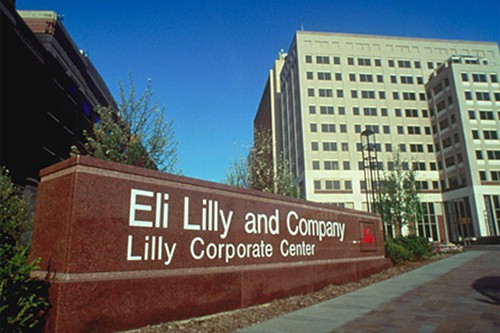
Eli Lilly has plans to topple Sanofi’s Lantus from the top of the long-acting insulin market, and now says it has plenty of data to achieve that objective.
The pharma firm says its insulin peglispro (LY2605541) candidate was able to cut levels of haemoglobin A1c (HbA1c) – a marker of glucose control – better than Lantus (insulin glargine) in two phase III trials involving people with type 1 diabetes, setting the project on track for regulatory filings early in 2015.
Lilly’s management had said earlier that it would only file for approval for the drug with a superiority claim so the latest data is significant for the project, which had seemed to be a little shaky after former partner Boehringer Ingelheim returned rights to the drug.
Their long-acting basal insulin met the primary objective of equivalence to Lantus in the IMAGINE-1 and IMAGINE-3 studies – which will form the basis of the marketing applications – but went beyond that to show superiority to Sanofi’s $7bn-a-year blockbuster, said Lilly.
The improved control of HbA1c levels compared to Lantus in type 1 diabetes patients was clear by 26 weeks and maintained at 52 weeks and 78 weeks in the studies, it said, adding that the data suggests insulin peglispro also performed better on measures such as preventing nocturnal low blood sugar counts (hypoglycaemia) and controlling weight gain in both type 1 and type 2 diabetes patients.
Overall however Lilly’s drug was more likely to cause daytime hypoglycaemia than Lantus, including severe hypoglycaemic events, which could have an impact on its competitiveness in the market and peak sales potential.
The hypoglycaemia data – and a possible liver safety signal with the drug alluded to by some analysts – could conspire against prompt approval of the drug. In both IMAGINE trials, treatment with insulin peglispro was associated with a statistically significant higher incidence of elevated liver enzymes, although there were no cases of severe liver injury.
Lilly has been optimistic that the cardiovascular safety profile for insulin peglispro in the trials will help it avoid a requirement for a cardiovascular outcomes study, which was demanded by the FDA for Novo Nordisk’s Lantus rival Tresiba (insulin degludec) but did not stop it securing approval in Europe.
The latest data indicates a “small but significant” increase in triglycerides in both trials, while one suggested an increase in blood pressure compared to Lantus, although the rate of serious cardiovascular events was lower than for Sanofi’s drug. It remains to be seen how the FDA will interpret the data.
Whether these conspire to reduce the sales potential of the new drug – some analysts are predicting it could make as little as $500m while others predict the blockbuster sales that Lilly desperately needs as it tries to rebuild its generics-hit portfolio.
Either way, the window of opportunity could be short. Biosimilar versions of Lantus – including one from Lilly/Boehringer that has been recommended for approval in the EU and others from the likes of Merck & Co – are moving through development, while Novo Nordisk says the timeline is shortening for Tresiba’s US approval and other competitors in the long-acting basal insulin space are coming through development.
Sanofi is also developing a Lantus follow-up called Toujeo which is already under regulatory review in both the US and Europe.




